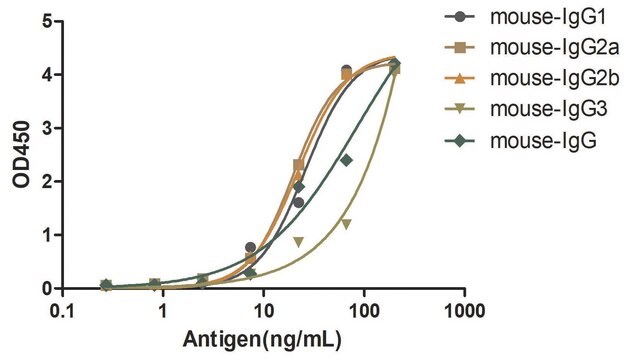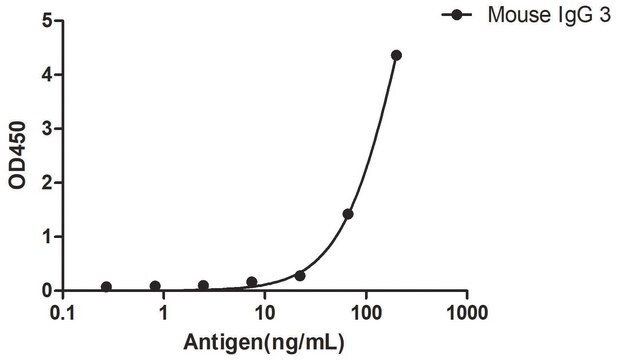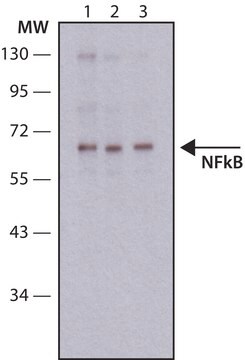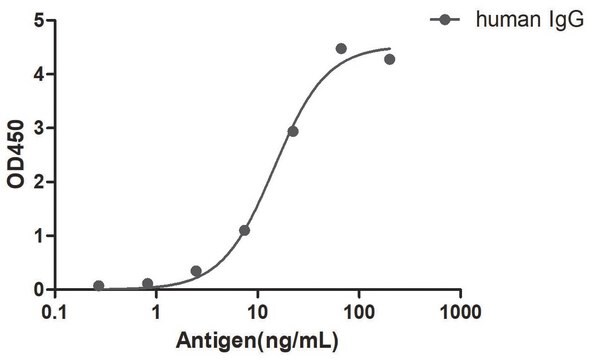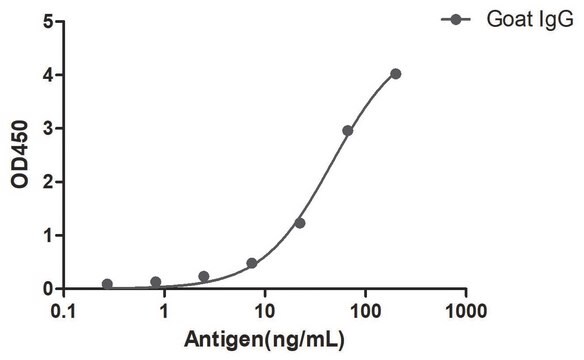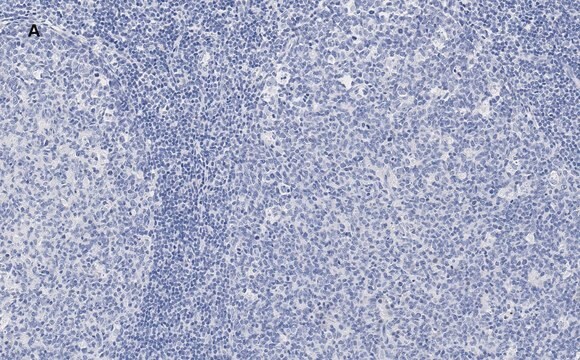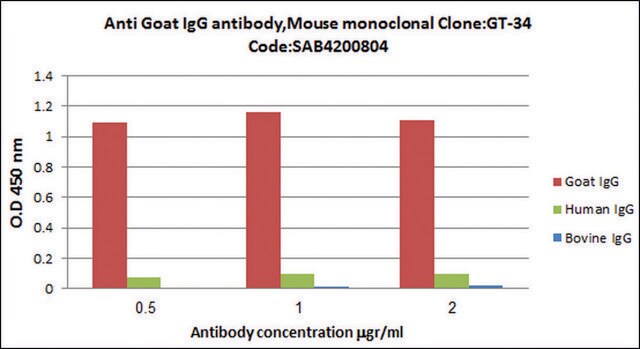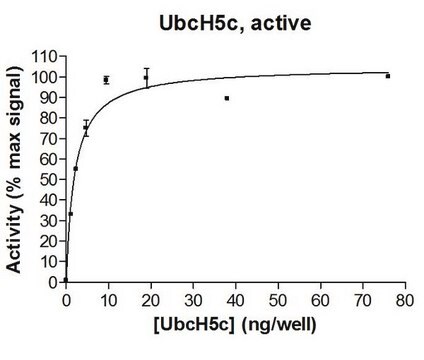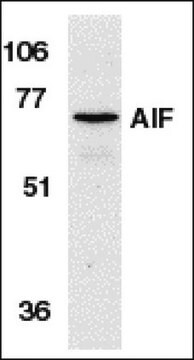SAB5801046
Alpaca Anti-Human IgG(Fcγ) single domain Antibody
recombinant Alpaca(VHH) Nano antibody
Synonim(y):
Recombinant Alpaca single variable domain secondary Nanobody
About This Item
Polecane produkty
pochodzenie biologiczne
alpaca
rekombinowane
expressed in E. coli
białko sprzężone
unconjugated (6*his tag and one cys were added at the C terminal of the VHH)
forma przeciwciała
affinity purified immunoglobulin
rodzaj przeciwciała
secondary antibodies
klon
recombinant monoclonal
Formularz
lyophilized solid
masa cząsteczkowa
14 kDa
reaktywność gatunkowa
Alpaca, human
metody
ELISA: 1:10000-1:50000
western blot: 1:10000-1:50000
rozmiar
0.1 mL
kolor
colorless
izotyp
VHH
Warunki transportu
wet ice
temp. przechowywania
2-8°C
Opis ogólny
In mammals, antibodies are classified into five main classes or isotypes – IgA, IgD, IgE, IgG and IgM. They are classed according to the heavy chain they contain – alpha, delta, epsilon, gamma or mu respectively. IgG is the most abundant antibody in normal human serum, accounting for 70-85% of the total immunoglobulin pool. Human IgG consists of four human subclasses (IgG1, IgG2, IgG3 and IgG4), and each contains a different heavy chain. The whole IgG molecule possesses both the Fc region and the Fab region, which possessing the epitope-recognition site. The IgG contains two heavy and light chains(kappa or lambda). The heavy chain is about 50 KD and the light chain is about 25 KD. The common IgG is monomeric with a molecular weight of approximately 150 kD.
VHH are single-domain antibodies derived from the variable regions of heavy chain of Camelidae immunoglobulin. The size of VHH is extremely small(less than15KDa) compared to other forms of antibody fragment, which significantly increase the permeability of VHH. Thus VHH is considered of great value for research, diagnostics and therapeutics.
Specyficzność
Isotype: VHH domain of alpaca IgG2b/2c
Immunogen
Opakowanie
Postać fizyczna
Rekonstytucja
Przechowywanie i stabilność
Inne uwagi
Nie możesz znaleźć właściwego produktu?
Wypróbuj nasz Narzędzie selektora produktów.
Hasło ostrzegawcze
Warning
Zwroty wskazujące rodzaj zagrożenia
Zwroty wskazujące środki ostrożności
Klasyfikacja zagrożeń
Aquatic Chronic 3 - Skin Sens. 1
Kod klasy składowania
13 - Non Combustible Solids
Klasa zagrożenia wodnego (WGK)
WGK 3
Temperatura zapłonu (°F)
Not applicable
Temperatura zapłonu (°C)
Not applicable
Wybierz jedną z najnowszych wersji:
Certyfikaty analizy (CoA)
Przepraszamy, ale COA dla tego produktu nie jest aktualnie dostępny online.
Proszę o kontakt, jeśli potrzebna jest pomoc Obsługa Klienta
Masz już ten produkt?
Dokumenty związane z niedawno zakupionymi produktami zostały zamieszczone w Bibliotece dokumentów.
Nasz zespół naukowców ma doświadczenie we wszystkich obszarach badań, w tym w naukach przyrodniczych, materiałoznawstwie, syntezie chemicznej, chromatografii, analityce i wielu innych dziedzinach.
Skontaktuj się z zespołem ds. pomocy technicznej